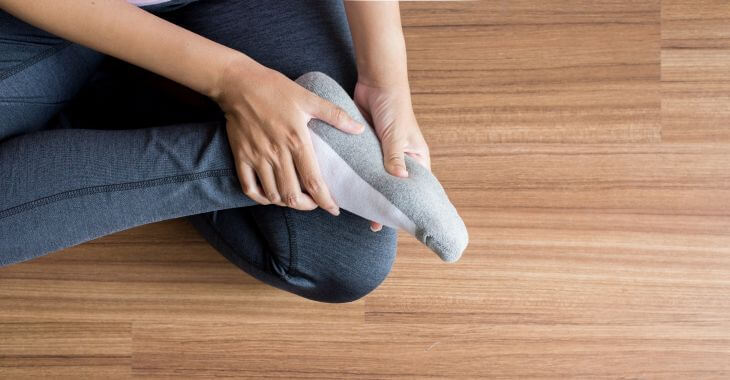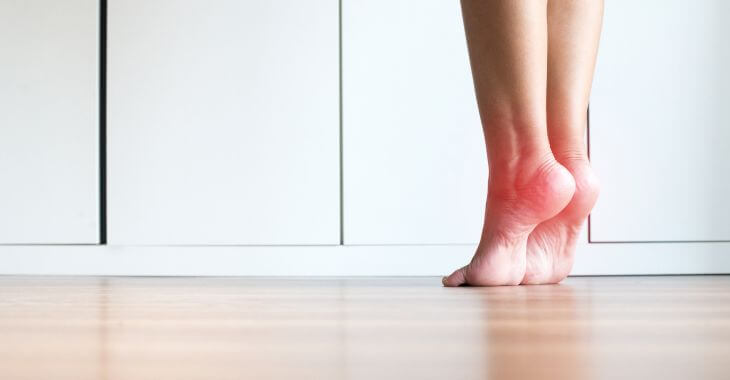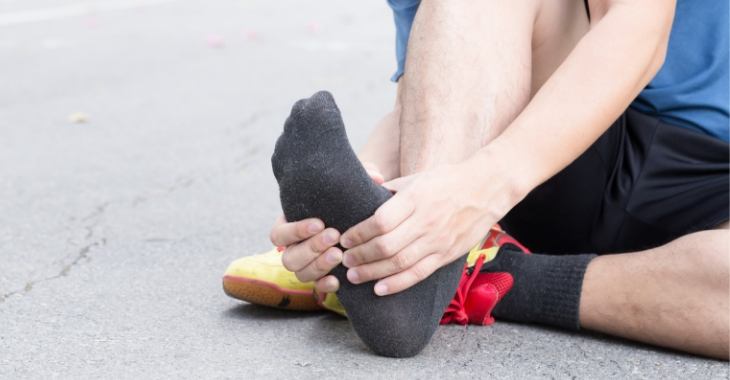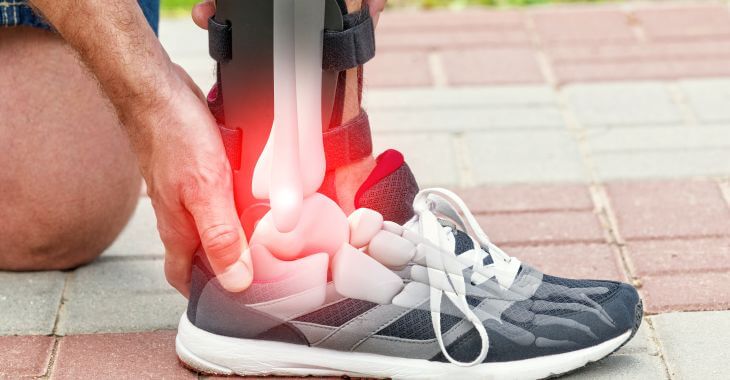Do Plantar Fasciitis Socks Work?

If you have pain in your heel or bottom of your foot, you could be experiencing plantar fasciitis. This condition affects the fascia or ligaments in the bottom of the foot that connect the heel to the toes. One of the non-invasive treatments that may offer relief is plantar fasciitis socks; but do they really work?
What Is Plantar Fasciitis?
Plantar fasciitis is an inflammation of the fascia or connective tissue in the bottom of the foot. It causes a shooting pain in the heel, which usually occurs after resting, but may dissipate after a short period of time. It can become worse if you are on your feet for long periods of time.
Plantar fasciitis is the most common cause of heel pain and affects an estimated one in ten adults. Risk factors include obesity, age (40-60 year-old persons are at higher risk), on-your-feet occupations, pregnancy, jogging and high or flat feet arches.
Compression Socks for Plantar Fasciitis
One of the least invasive and less expensive treatments for heel pain is compression socks for plantar fasciitis. These support socks apply pressure to the foot and may improve circulation in the feet, which can help with inflammation that may contribute to plantar fasciitis.
Plantar fasciitis socks are a basic treatment for this condition. The socks do not necessarily work for everyone, but they may provide relief for some individuals with heel pain. It is believed that socks for plantar fasciitis can provide the following benefits to relieve stabbing heel pain:
- Stretching the fascia in the bottom of the foot
- Improving foot circulation to reduce inflammation
- Light support for the arches
Compression socks for plantar fasciitis can be worn with most shoes, giving the feet support throughout the day. There are different options available that may offer some relief for those with irritated plantar fascia or other types of foot inflammation.
Choosing Plantar Fasciitis Socks
There are a few different options in compression socks for plantar fasciitis. If you have been experiencing heel pain or your doctor has diagnosed plantar fasciitis, you may want to consider trying compression socks to see if they give you any heel pain relief. The following are some of the styles available:
- Ankle socks – these only compress the foot
- Knee highs – if you have poor circulation that causes leg swelling, you may prefer knee highs
- Sleeves – sleeves only fit over the middle of the foot, not over the heel or toes
Ankle and knee high styles can be worn as regular socks with your shoes or even worn while sleeping. The sleeves work well for those wearing shoes that are typically worn without socks, like sandals, slip-ons and high heeled shoes.
The different styles of compression socks for plantar fasciitis come with various features. When choosing a compression sock, you first need to determine the size you need and the extent of compression. Some features to consider when choosing your sleeve or sock include:
- Mild, moderate, firm or extra-firm compression
- Moisture wicking material
- Copper infused – this is believed to help with circulation and foot odor
- Thermal regulation
Some compression sleeves may be adjustable, which can be beneficial for those with varying requirements for compression. The cost of plantar fasciitis socks varies greatly from around ten dollars on up.
What If Compression Socks Do Not Work?
If you decide to try compression socks for your heel pain or plantar fasciitis, it may not give you the relief you need. This is an over-the-counter remedy that may work for mild cases of plantar fasciitis, but more severe cases may require lifestyle changes or medical treatment.
Lifestyle changes can include losing weight if you are overweight or obese. This can reduce pressure on your feet. Improving your footwear can be beneficial for better arch support. If you jog or run for exercise, trying a different sport with less foot impact may give you heel pain relief.
When conservative plantar fasciitis home remedies like compression socks do not give you heel pain relief, it may be time to seek medical advice from your doctor. He or she may recommend medical treatments that may include:
- Stretching exercises for the feet, usually through a physical therapist
- Stretching splints to wear when you sleep
- Custom-fit orthotics to support arches and foot pressure
- Steroid injections to reduce inflammation
- Platelet-rich plasma (PRP) injections to stimulate healing
- Minimally invasive surgery

Many individuals with plantar fasciitis can overcome their condition with non-invasive treatments. Very few need extensive medical treatments or surgery, but it is a possibility when conservative methods like plantar fasciitis socks and other treatments are ineffective.
If you have heel pain, you may want to give compression socks for plantar fasciitis a try to see if they give you relief. For more aggressive relief for heel pain, see your doctor for a diagnosis and to discuss other plantar fasciitis treatments.
The information provided on this website, including text, graphics, images, and other materials, is intended solely for informational purposes and should not be used as a substitute for professional medical advice, diagnosis, or treatment.



)